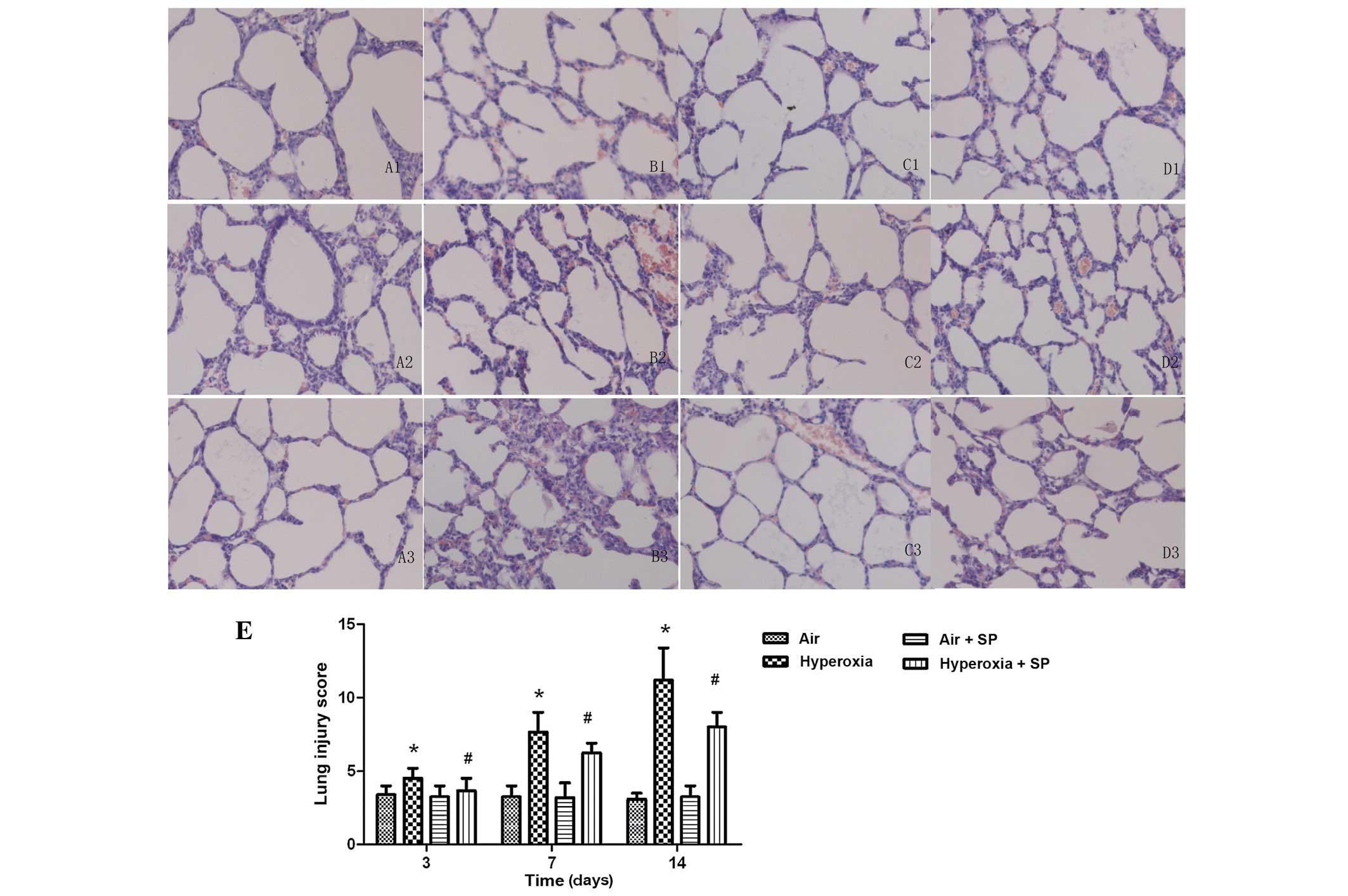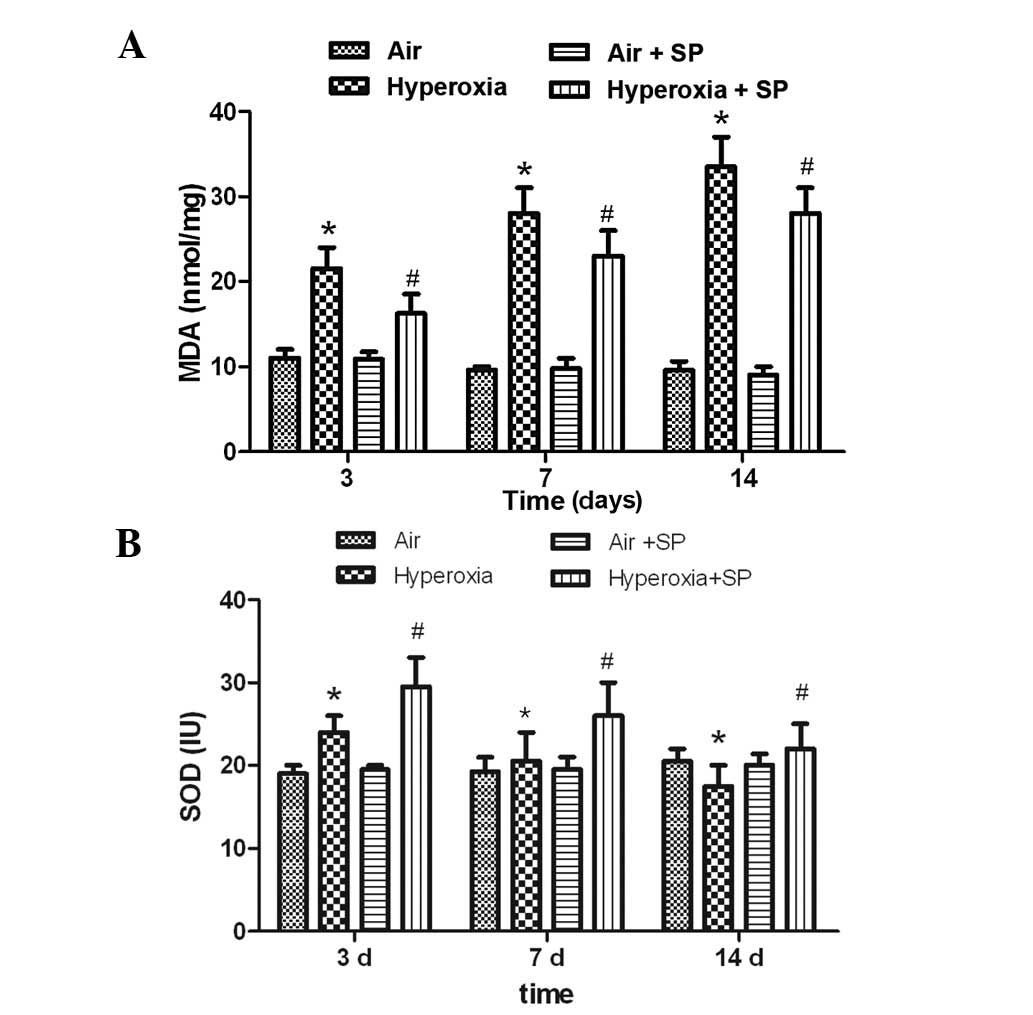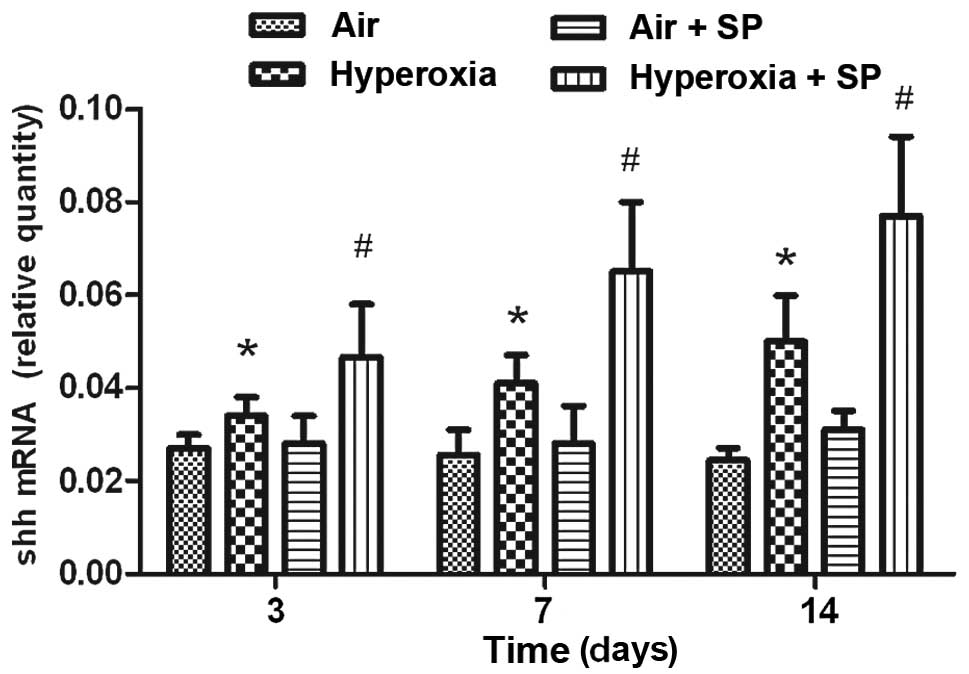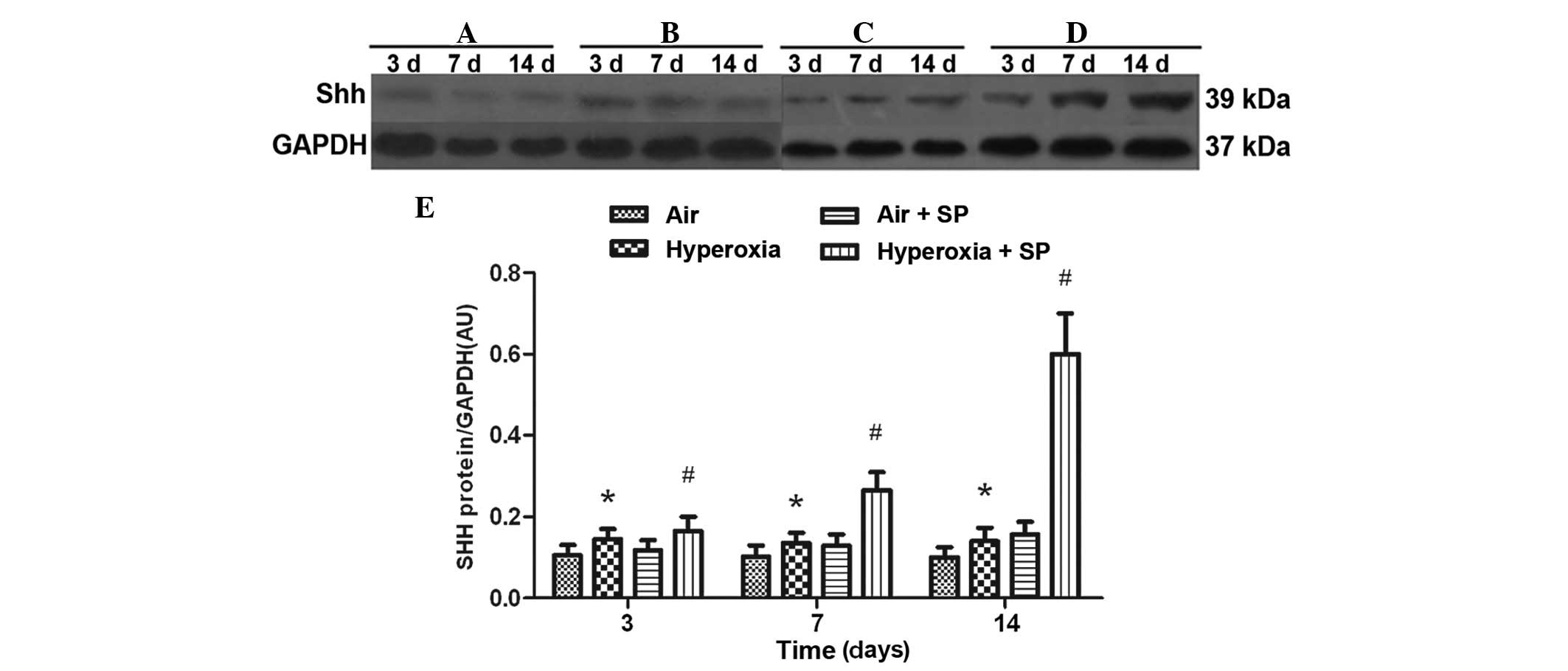|
1
|
Kallet RH and Matthay MA: Hyperoxic acute
lung injury. Respir Care. 58:123–141. 2013. View Article : Google Scholar
|
|
2
|
Buccellato LJ, Tso M, Akinci OI, Chandel
NS and Budinger GR: Reactive oxygen species are required for
hyperoxia-induced Bax activation and cell death in alveolar
epithelial cells. J Biol Chem. 279:6753–6760. 2004. View Article : Google Scholar : PubMed/NCBI
|
|
3
|
Maggi CA, Giachetti A, Dey RD and Said SI:
Neuropeptides as regulators of airway function: vasoactive
intestinal peptide and the tachykinins. Physiol Rev. 75:277–322.
1995.PubMed/NCBI
|
|
4
|
Hökfelt T, Pernow B and Wahren J:
Substance P: a pioneer amongst neuropeptides. J Intern Med.
249:27–40. 2001.PubMed/NCBI
|
|
5
|
Kim JS, Rabe KF, Magnussen H, Green JM and
White SR: Migration and proliferation of guinea pig and human
airway epithelial cells in response to tachykinins. Am J Physiol.
269:L119–L126. 1995.PubMed/NCBI
|
|
6
|
Kim JS, McKinnis VS, Adams K and White SR:
Proliferation and repair of guinea pig tracheal epithelium after
neuropeptide depletion and injury in vivo. Am J Physiol.
273:1235–1241. 1997.PubMed/NCBI
|
|
7
|
Huang B, Fu H, Yang M, Fang F, Kuang F and
Xu F: Neuropeptide substance P attenuates hyperoxia-induced
oxidative stress injury in type II alveolar epithelial cells via
suppressing the activation of JNK pathway. Lung. 187:421–426. 2009.
View Article : Google Scholar
|
|
8
|
Zhang M, Wang H, Teng H, Shi J and Zhang
Y: Expression of SHH signaling pathway components in the developing
human lung. Histochem Cell Biol. 134:327–335. 2010. View Article : Google Scholar : PubMed/NCBI
|
|
9
|
Li Y, Zhang H, Choi SC, Litingtung Y and
Chiang C: Sonic hedgehog signaling regulates Gli3 processing,
mesenchymal proliferation, and differentiation during mouse lung
organogenesis. Dev Biol. 270:214–231. 2004. View Article : Google Scholar : PubMed/NCBI
|
|
10
|
Watkins DN, Berman DM, Burkholder SG, Wang
B, Beachy PA and Baylin SB: Hedgehog signalling within airway
epithelial progenitors and in small-cell lung cancer. Nature.
422:313–317. 2003. View Article : Google Scholar : PubMed/NCBI
|
|
11
|
Lai K, Kaspar BK, Gage FH and Schaffer DV:
Sonic hedgehog regulates adult neural progenitor proliferation in
vitro and in vivo. Nat Neurosci. 6:21–27. 2003. View Article : Google Scholar : PubMed/NCBI
|
|
12
|
Fu M, Lui VC, Sham MH, Pachnis V and Tam
PK: Sonic hedgehog regulates the proliferation, differentiation,
and migration of enteric neural crest cells in gut. J Cell Biol.
166:673–684. 2004. View Article : Google Scholar : PubMed/NCBI
|
|
13
|
Kinnula VL and Crapo JD: Superoxide
dismutases in the lung and human lung diseases. Am J Respir Crit
Care Med. 167:1600–1619. 2003. View Article : Google Scholar : PubMed/NCBI
|
|
14
|
Jackson RM: Pulmonary oxygen toxicity.
Chest. 88:900–905. 1985. View Article : Google Scholar
|
|
15
|
Scott JR, Muangman P and Gibran NS: Making
sense of hypertrophic scar: a role for nerves. Wound Repair Regen.
15(Suppl 1): S27–S31. 2007. View Article : Google Scholar : PubMed/NCBI
|
|
16
|
Scott JR, Muangman PR, Tamura RN, et al:
Substance P levels and neutral endopeptidase activity in acute burn
wounds and hypertrophic scar. Plast Reconstr Surg. 115:1095–1102.
2005. View Article : Google Scholar : PubMed/NCBI
|
|
17
|
Dib M, Zsengeller Z, Mitsialis A, Lu B,
Craig S, Gerard C and Gerard NP: A paradoxical protective role for
the proinflammatory peptide substance P receptor (NK1R) in acute
hyperoxic lung injury. Am J Physiol Lung Cell Mol Physiol.
297:L687–L697. 2009. View Article : Google Scholar : PubMed/NCBI
|
|
18
|
Oslund KL, Hyde DM, Putney LF, et al:
Activation of neurokinin-1 receptors during ozone inhalation
contributes to epithelial injury and repair. Am J Respir Cell Mol
Biol. 39:279–288. 2008. View Article : Google Scholar : PubMed/NCBI
|
|
19
|
Chen Y and Struhl G: Dual roles for
patched in sequestering and transducing Hedgehog. Cell. 87:553–563.
1996. View Article : Google Scholar : PubMed/NCBI
|
|
20
|
Motoyama J, Liu J, Mo R, Ding Q, Post M
and Hui CC: Essential function of Gli2 and Gli3 in the formation of
lung, trachea and oesophagus. Nat Genet. 20:54–57. 1998. View Article : Google Scholar : PubMed/NCBI
|
|
21
|
Le H, Kleinerman R, Lerman OZ, et al:
Hedgehog signaling is essential for normal wound healing. Wound
Repair Regen. 16:768–773. 2008. View Article : Google Scholar : PubMed/NCBI
|
|
22
|
Katoh Y and Katoh M: Hedgehog signaling
pathway and gastrointestinal stem cell signaling network (Review).
Int J Mol Med. 18:1019–1023. 2006.PubMed/NCBI
|
|
23
|
Kusano KF, Pola R, Murayama T, et al:
Sonic hedgehog myocardial gene therapy: tissue repair through
transient reconstitution of embryonic signaling. Nat Med.
11:1197–1204. 2005. View
Article : Google Scholar : PubMed/NCBI
|
|
24
|
Warburton D, Zhao J, Berberich MA and
Bernfield M: Molecular embryology of the lung: then, now, and in
the future. Am J Physiol. 276:L697–L704. 1999.PubMed/NCBI
|
|
25
|
Litingtung Y, Lei L, Westphal H and Chiang
C: Sonic hedgehog is essential to foregut development. Nat Genet.
20:58–61. 1998. View
Article : Google Scholar : PubMed/NCBI
|
|
26
|
Stewart GA, Hoyne GF, Ahmad SA, et al:
Expression of the developmental Sonic hedgehog (Shh) signalling
pathway is up-regulated in chronic lung fibrosis and the Shh
receptor patched 1 is present in circulating T lymphocytes. J
Pathol. 199:488–495. 2003. View Article : Google Scholar : PubMed/NCBI
|


















